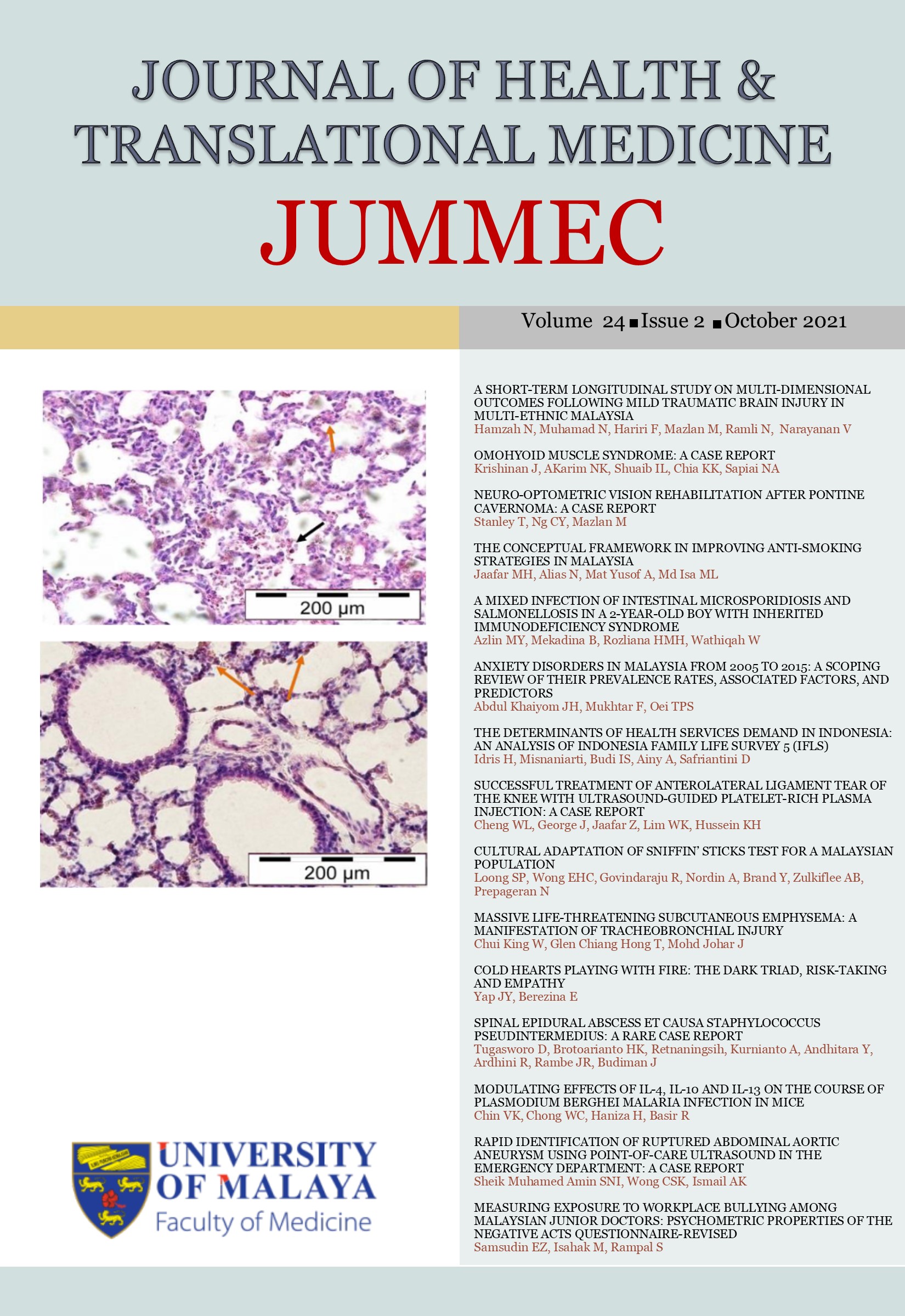SPINAL EPIDURAL ABSCESS ET CAUSA STAPHYLOCOCCUS PSEUDINTERMEDIUS: A RARE CASE REPORT
Received 2020-10-12; Accepted 2021-07-15; Published 2021-10-06
DOI:
https://doi.org/10.22452/jummec.vol24no2.12Keywords:
radiating pain, spinal epidural abscess, Staphylococcus pseudintermediusAbstract
Background: Spinal epidural abscess (SEA) is a rare disease, difficult to detect, high defect rate, and can be lifethreatening. It is characterized by accumulation of pus in the epidural space causing suppression of the spinal cord and spinal roots. This study will describe a case of a 35-year-old man with SEA in Indonesia.
Case presentation: A 35-year-old male with pain in the lumbar region 1, radicular pain according to thoracic dermatome 10, flaccid inferior paraplegia, hypoesthesia as high as thoracic dermatome 10, and retention of alviet uri due to SEA caused by Staphylococcus pseudintermedius confirmed by abscess culture. Management of this patient was through an operation, debridement, and administration of antibiotic.
Conclusion: This patient was diagnosed with SEA from anamnesis, physical examination, laboratory finding, and radiology finding. This case is rarely found and is a big problem for neurologists due to the difficulty of early diagnosis.
Downloads
Downloads
Published
Issue
Section
License
All authors agree that the article, if editorially accepted for publication, shall be licensed under the Creative Commons Attribution License 4.0 to allow others to freely access, copy and use research provided the author is correctly attributed, unless otherwise stated. All articles are available online without charge or other barriers to access. However, anyone wishing to reproduce large quantities of an article (250+) should inform the publisher. Any opinion expressed in the articles are those of the authors and do not reflect that of the University of Malaya, 50603 Kuala Lumpur, Malaysia.


